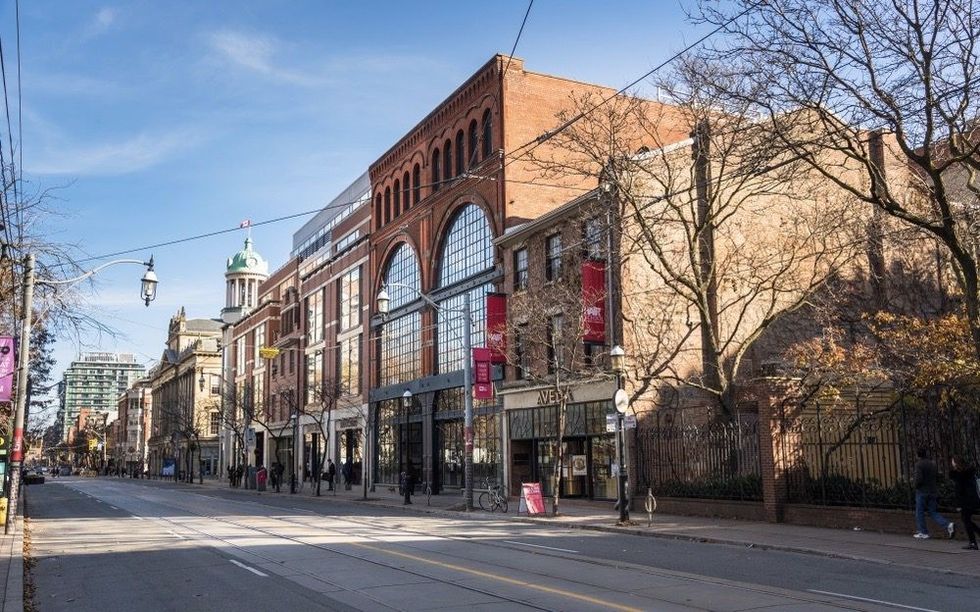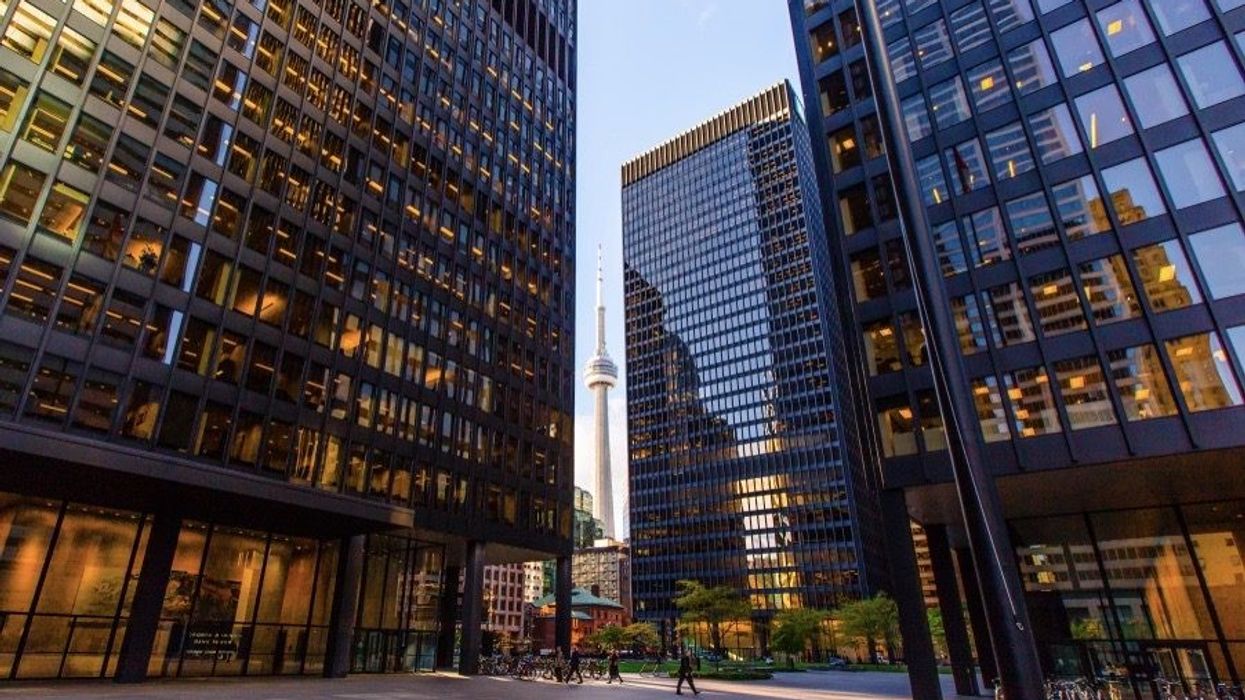The Greater Toronto Area is forecasted to present strong economic fundamentals in 2022, thanks in large part to positive labour market trends taking shape across the GTA, according to an outlook report from Morguard.
The labour market is expected to grow by 3.9% during the latter half of 2022, and by next year the unemployment rate is slated to dip to 7.8%, however, it will take years for employment to return to pre-pandemic levels. The region’s housing market is slated to remain “stable and healthy,” Mortguard says, adding that sales will surpass the long-year-average in 2022.
The GTA’s real GDP is anticipated to grow by a 2.2% per annum between 2023 and 2025, with retail sales expected to drive growth. Although employment will surpass pre-pandemic levels by 2023, the unemployment rate will be markedly higher through 2025. The GTA’s office sector showed signs of recovery in the first half of this year, with some office space users even revisiting expansion and relocation plans, which caused a spike in property tours and leasing activity. The reason for enhanced activity is inoculation rates against COVID-19 rose dramatically, according to Morguard. Vacancy rates increased by 240 basis points to 13.3% between the end of 2020 and halfway through 2021, while vacancy rose by 4.1% to 10.9% during the second half of the year. Additionally indicative of a recovery, subleases began declining -- sublease availability had increased by 1.1 million sq. ft. in the first half of the year, down from 3.6 million sq. ft. in H2-2020. In fact, about 815,000 sq. ft. of sublease space was either leased or removed from the market between the first and third quarters of 2021, which also signifies the recovery is well underway.
READ: Omicron Injects Uncertainty into Toronto’s Rebounding Office Sector
Investors were still selective, though, when it came to choosing office space in the GTA, because of a soft leasing market. Institutional investors, in particular, preferred office properties that had existing long-term leases in place. Riskier assets, on the other hand, have become harder to trade, with only $698.5 million of office properties sold in the GTA during the first half of 2021. But a return to normalcy is projected for the GTA’s office sector in the short term, although that will occur in lockstep with pandemic restrictions easing. Tenants will also be searching for deals in the sublease space. As leasing conditions begin normalizing, investors will scoop up the best properties on the market.
The GTA’s industrial sector had record-low availability of 1% six months into 2021, matching a 20-year low previously reached in Q3-2019. Expansion and relocation options have been limited in the GTA because of a dearth of functional space for industrial users, despite an increase in new construction and completions, which fell just short of 5.9 million sq. ft. during the first half of 2021, which follows 12.1 million sq. ft. completed in 2020 -- a 20-year annual high. E-commerce-related businesses, warehouse and distribution companies, as well as logistics operators, led the absorption. Morguard described investment in GTA industrial properties as brisk, with about $2.9 billion worth of properties sold in the first half of 2021. Morguard anticipates that the GTA’s industrial sector will outperform over the next few years, driven by leasing activity so strong that it outpaces the availability of supply. E-commerce activity will continue growing, and that will support robust leasing activity. As a result, investment capital will keep flowing into the GTA for years to come, the real estate company predicts.
The Retail Market in the GTA Has Been Underwhelming for Years

Most retailers have watched sales revenue plummet, especially in light of pandemic-related restrictions, and leasing activity is consequently below pre-pandemic levels. As one can imagine, expansions were scarce in the most retail categories, however, grocery and other service retail sectors have done quite well. Still, Morguard believes the GTA’s retail vacancy rate will rise through the second half of 2021, having already increased by 1.2% to 5.6% at the end of 2020 from the beginning of the pandemic. Unsurprisingly, then, investment has been bearish in the retail sector throughout the pandemic, which is in line with a nationwide trend. In the GTA, investment sales only reached $1.4 billion in the first half of 2021. Morguard described investment demand as “muted,” because of the generally poor outlook in the industry that stems from the pandemic, which eroded landlord and retailer revenues. In the worst cases, retailers shut down operations permanently while others only survived thanks to government subsidies. Investors are waiting on the sidelines for the sector’s outlook to ameliorate, but essential store-anchored assets nevertheless continued trading, as did properties zoned for higher density and redevelopment potential.
The retail sector is staring down what Morguard called “a period of adjustment,” beginning at the end of 2021, which would see shoppers return to stores in larger numbers. As a result, retailers will look at their long-term needs and, if revenues improve, they could make long-term leasing decisions, which would increase leasing activity. Although investment activity has fallen below the long-term average, it will rebound, but probably not until the medium-term as the adjustment period is only beginning.
READ: Average GTA Rent Expected to Increase By as Much as 11% in 2022
The multifamily sector in the GTA was hit by the pandemic, at least at the beginning, as mass job losses and closed borders affected rental demand. The GTA’s rental vacancy rose to 3.4% in the fall of 2020 from 1.5% a year earlier, but rents are climbing once again. Morguard says investment sales activity in the GTA’s multifamily sector, at about $1.5 billion in the first half of 2021, was in line with previous peak periods of $3.1 billion annually between 2018 and 2020, suggesting high investor confidence. Institutional investors are targeting high-rise towers, and with private groups, joint ventures and partnerships common, vendors are achieving their sales targets, as bidding wars break out. But while benchmark prices are climbing, cap rates are compressing.
The multifamily sector has a generally positive outlook, according to Morguard, because rental demand fundamentals are expected to strengthen in the short term as the population continues adopting the COVID-19 vaccines at such high rates and pandemic restrictions are loosened. Moreover, as the Canadian border reopens and more people choose to settle in Toronto, rental demand will keep growing and the vacancy rate will keep falling. As that happens, investors will keep scooping up properties that have attractive yields and income potential, and vendors, for their part, will have no trouble offloading their assets. As a result, the bidding environment should remain aggressive.





















